The Definitive Shure Beta 58A Review
Is this upgrade to the Shure SM58 really worth paying out for?
We put the Shure Beta 58A to the test.
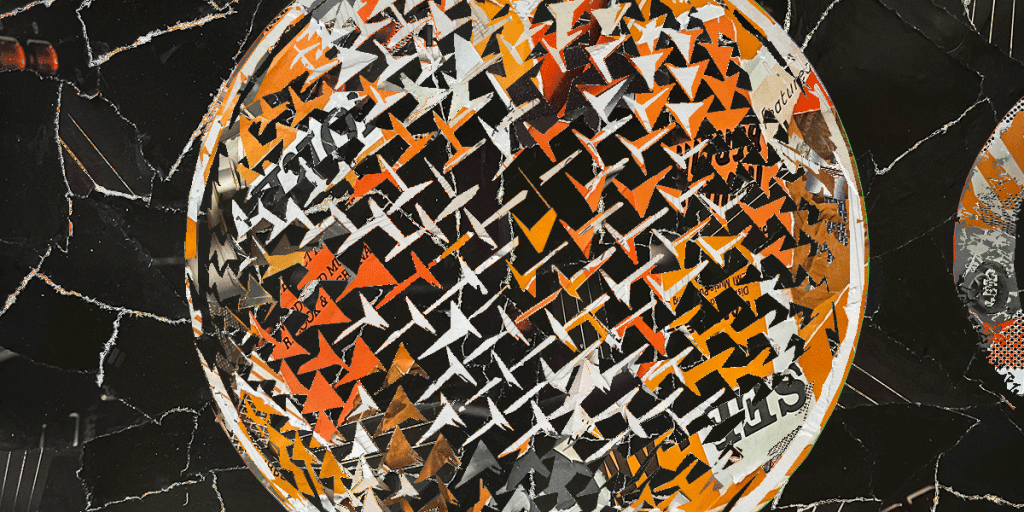
Reviewed by: Paul Narang
Review date: September 2022
Current price: Around $150
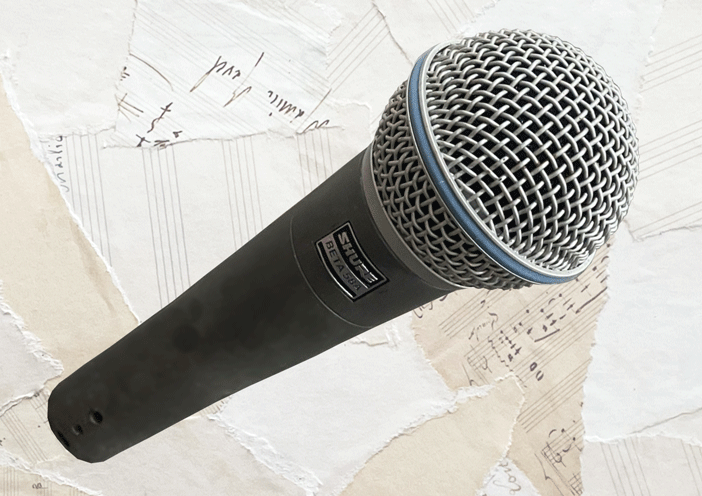

Shure BETA 58A Review
| Pros: | Cons: |
| High gain before feedback Balanced and detailed sound Solid construction | Sensitive to plosives |
Shure Beta 58A Review
An industry standard dynamic vocal mic with a tight supercardioid pickup pattern. The Beta 58A excels in live performance, delivering bright and clean vocals – even amidst the noisiest setup. With it’s rugged and durable construction, it’s well suited to the rigours of stage use.
What is it?
Shure are world renowned for their vocal microphones, which are used extensively by chart topping singers of the highest calibre. If you’ve ever seen a live show, chances are you’ll have heard a Shure microphone.
The most famous of the Shure vocal mics is the SM58, but there’s a whole range of them out there, each with their own unique characteristics. One of these is the Shure Beta SM58A, used by Kurt Cobain, David Bowie and Noel Gallagher, amongst many others.
The Shure Beta 58A is a true workhorse vocal mic. It’s the go to mic for countless vocalists due to its naturally clear sound, and effortless ability to cut through the mix. It also has some great practical qualities – the strong metal exterior easily handles being dropped on stage, and the rigours of life on the road.
Let’s see how it performs in this Shure Beta 58A review.
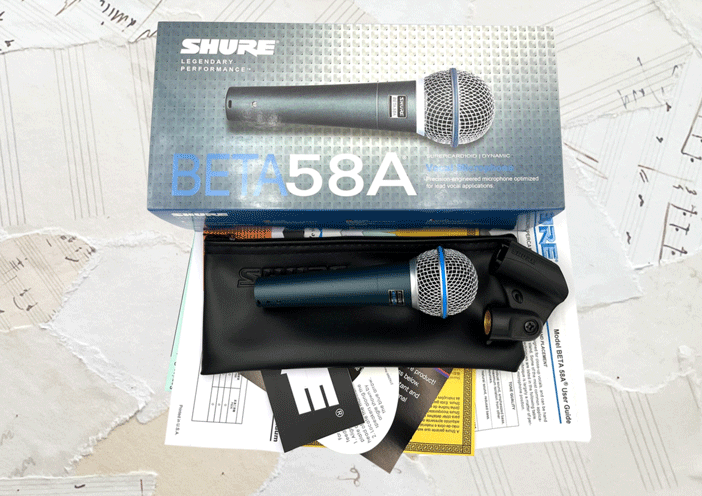
In the box
The Shure Beta 58A mic arrived in a small silver, blue and white cardboard box. It’s well packaged, protected by a good deal of bubble wrap. It also includes:
- microphone clamp
- leatherette microphone pouch
- User guide
- 3/8″ reduction thread
- Shure velcro band
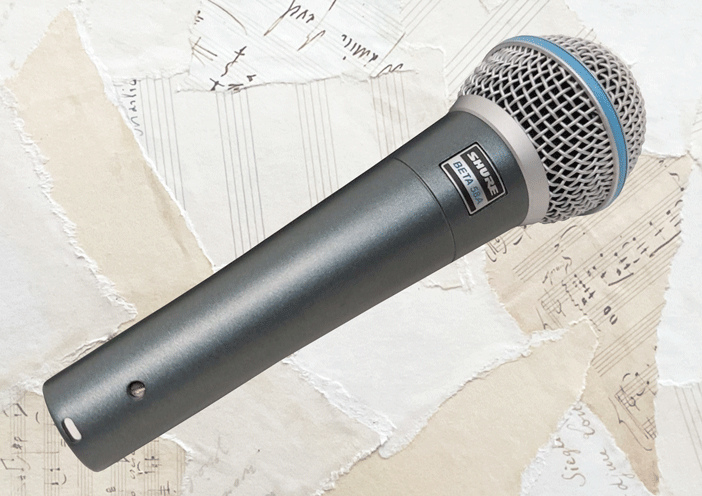
Dynamic vs condenser microphone
The Shure Beta 58A is a ‘dynamic’ mic, making it particularly suitable for live use. Dynamic microphones differ to ‘condenser’ microphones in the following ways:
- They’re less sensitive (suitable for loud sounds)
- They’re less prone to feedback on stage
- They’re more rugged and durable for live use
- They’re cheaper
- There’s no need for batteries or phantom power
Dynamic mics in the home recording studio
Although dynamic mics are regularly used in live performance, they also have a unique place in the studio. The lack of sensitivity might sound like a drawback, but it can also work to your advantage.
A dynamic microphone, particularly one with a cardioid pattern, will pick up less of a poor sounding room, street sounds, or distant traffic rumble. It’s also the ideal choice for loud instruments such as drums and brass.
They also have their own tone, and can be used to tame shrill sounding instruments, or to add darkness and grit to overly bright vocals.
Beta 58A Polar pattern
The Shure Beta 58A dynamic vocal mic has a supercardioid pickup pattern, which is tighter than the more common heart-shaped, cardioid polar pattern. It picks up a band of sound from the front, as well as a narrower band from the back. Sound is rejected from the back and sides.
This makes it ideal for use on stage, where you can really isolate the vocals from other noisy instruments, and minimise feedback. It’s also great for the studio when you have 2 or more singers or instrumentalists recording at the same time.
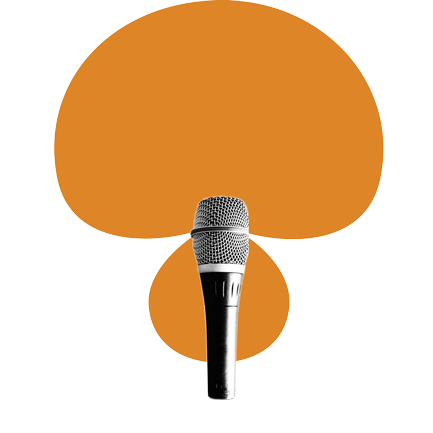
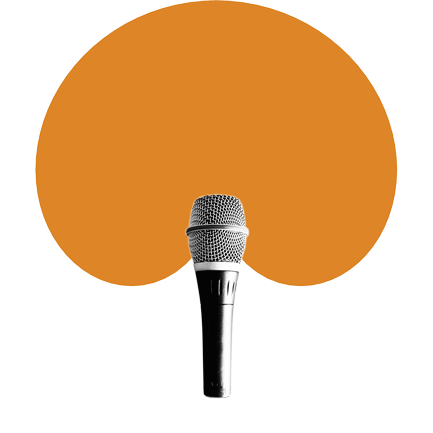
A standard cardioid pattern is ideal for a home studio where the acoustics of the room are less than ideal. It picks up the sound of the vocalist in front of the mic, while rejecting most of the reflections coming from the room.
This is emphasised even more with a supercardioid like the Beta 58A. And being a dynamic mic, it will pick up less of those distant sounds, like traffic rumble or noisy neighbours.
A note of caution – a mic with a super-cardioid polar pattern also picks up a small amount of sound from behind. So it’s important to be aware of what’s directly behind you.
No on/off switch on the Beta 58A?
The Beta 58A doesn’t have an on/off switch. This is standard for most pro-level mics, as it minimises the risk of the singer accidentally turning the mic off. The live engineer is responsible for cutting the sound at the right time by muting the signal at the mixing desk.
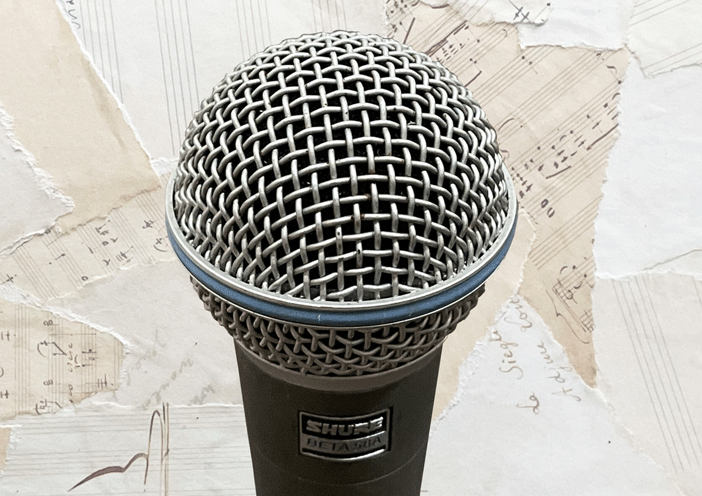
If you really need an on off switch, consider the Shure Sm58-SE – an SM58 with the addition of a switch. This is also sometimes referred to as the SM58S.
Phantom power for the Beta 58A?
The Beta 58A is a dynamic mic, which means it doesn’t require any form of external power. There’s no need for batteries, or ‘phantom power’ from the audio interface or mixer.
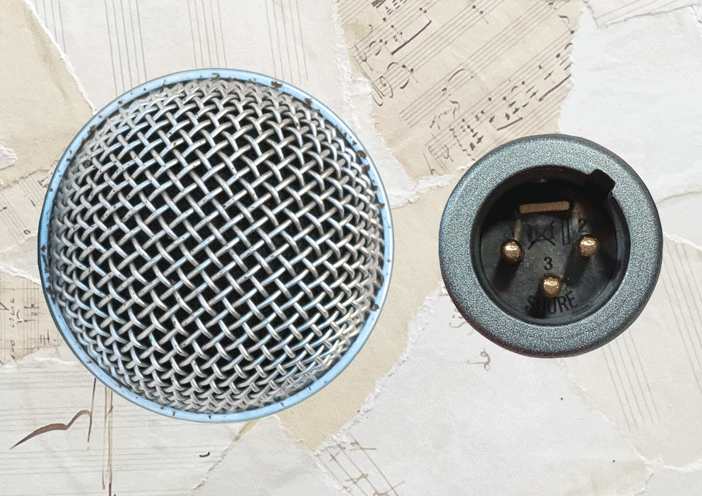
Connecting the Shure Beta 58A
The 58A uses an XLR cable to connect directly to an audio interface or mixer. XLR are the standard connectors on all professional studio equipment. They’re ‘balanced’, which means the cables are shielded from interference and carry a higher signal than unbalanced cables.
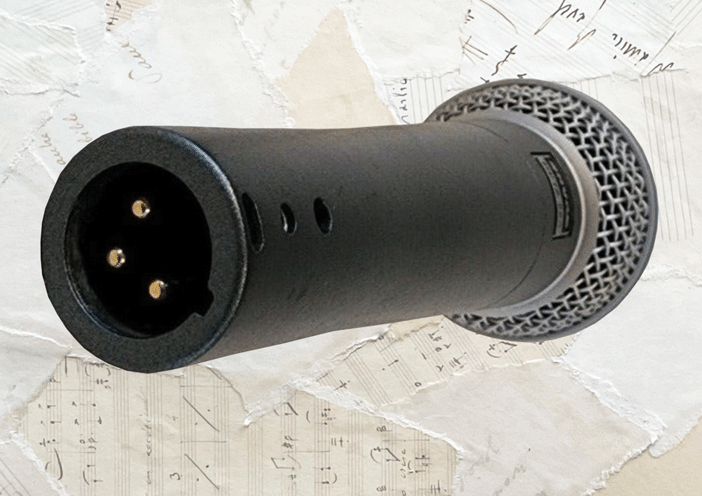
If your audio interface or mixer has 1/4″ jack inputs, you’ll need a cable with an XLR connector on one end, and a 1/4″ jack on the other, like this. Keeping cable lengths to a minimum is good practice to maintain the best signal.
The Shure Beta 58A Design and Build
The direct predecessor to the Beta 58A is Shure’s classic SM58 microphone. The SM58 was built in the mid 60s as a mic which could handle the rigours of live rock music. But despite catching on as the de facto mic for live vocalists, the SM58 had one drawback. It’s warm sound meant that vocals were sometimes getting lost in the mix.
The Beta 58A was developed as a brighter alternative to the SM58, aiming to put the vocals at the front of the mix. It was a clear success. The 58A effortlessly lifts vocals above the busiest band, cutting through the thickest walls of crashing drums and distorted guitars.
The Shure Beta 58A dynamic vocal mic is a road-worthy mic with a tough exterior. Once in your hand, you’ll be reassured by its substantial weight. It’s a mic which frees you up to have fun on stage, knowing that the internal electronics are well-protected. The Beta 58A will thrive at the mercy of even the most rambunctious live band.
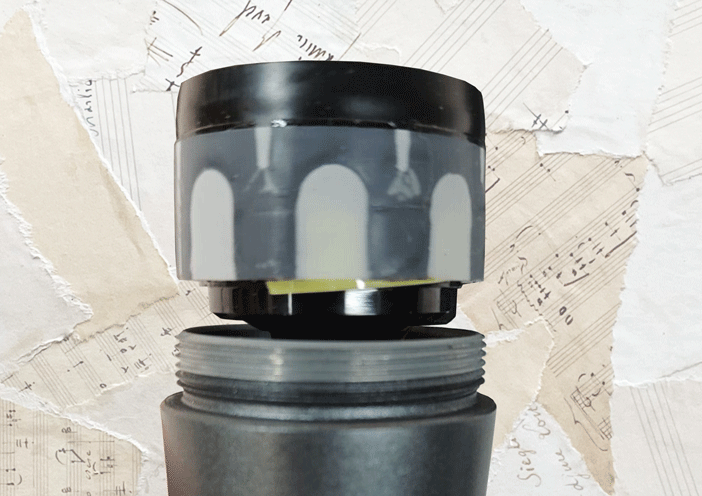
The Beta 58A is a solidly built microphone, with a metal enclosure and a hardened steel grille. The grille unscrews, giving you access to the internal electronics. It also provides access to the foam insert, for cleaning. The body of the Beta 58A has a subtle and classy blue hue, clearly distinguishing it from the SM58.
The Shure Beta 58A has a pneumatic shock mount which effectively reduces handling noise. This is ideal for vocalists who like to move around while performing. You can have fun with the 58A without worrying about creating unwanted noise.
Inside the mic is a humbucker coil with a neodymium magnet. This coil cancels electromagnetic hum from electronics and lighting rigs, always ensuring a clean signal. It also houses gold-plated plug element pins. These are durable pins, which reduce noise, such as buzzing and hissing. It also utilises a neodymium ferrous magnet for high signal-to-noise output.
Like Shure’s other dynamic vocal mics, the Beta 58A has a clean minimal design. The only distinguishing difference between the 58A and an SM series mic is an attractive blue ring and the subtle blue hue of the body.
It also comes with a 2 year warranty, in case anything does go wrong.
Shure Beta 58A Dimensions and Weight
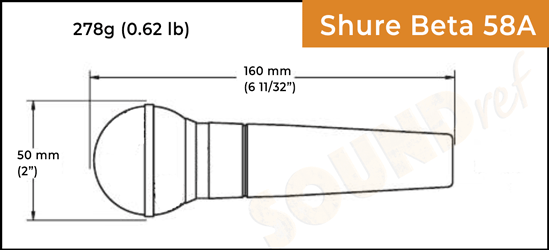
At 0.6lb (278g), the Beta 58A is of average weight when compared to other performance-based microphones in its class. It feels like the ideal weight – light enough to not burden the performer, but heavy enough to inspire confidence.
The dimensions are 160 mm x 50mm, similar to the SM57 and SM58.
Shure Beta 58A Frequency response
The Beta 58A has a wide frequency range of 50 Hz to 16 kHz. This is naturally narrower than condenser microphones, but ideally suited for vocals. Whether you’re a male or female vocalist, this microphone will deliver a natural, clean sound.
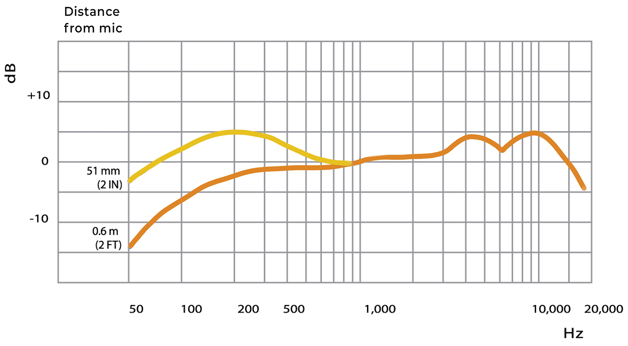
This clarity in the higher frequencies comes from two distinct peaks in the upper frequencies – one at around 3.5kHz and the other at 10kHz. This lift in presence created a natural brightness which elevates vocals within a busy mix. This is especially useful in a live setting, especially if you don’t have a live mix engineer.
Another attribute, ideal for live performance, is a gradually falling bass response below 500Hz. This ensures no boominess when using the mic at close range. If you need more bass, you can come closer to the mic – the proximity effect will raise the lower frequencies. In the chart above, the yellow line demonstrates the extra bass around 150 Hz when singing 2 inches from the mic.
Beta 58A Sensitivity and Impedance
As a dynamic mic, the Shure Beta 58A is less sensitive than a condenser mic, such as the Sennheiser E965. While this may sound like a drawback, for live use it really isn’t. Dynamic mics are great for isolating sounds. They pick up what’s in front of them, and reject sound from other instruments such as noisy drummers.
The Shure Beta 58A has low output impedance, stated as being 290 ohms. This helps to keep noise out of the circuit, and maintaining a stable output voltage. In live use, you can use a long cable without worrying about picking up interference.
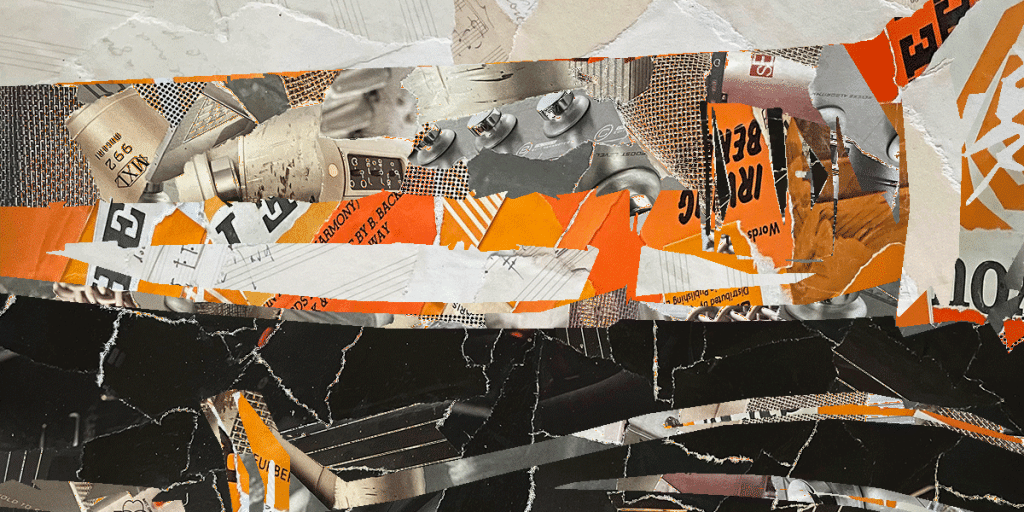
Shure Beta 58A Sound quality
The Beta 58A has a clear, naturally bright sound, particularly suited to singers – both male and female. You don’t have to shout to be heard with this mic. And as a result, it picks up every nuance and subtlety, reproducing them with clarity across the stage speakers.
The bass roll off at 500 Hz does a good job of removing any unwanted bass. This is different to the way the SM58 works, and may sound a tad bass-light if you’re used to a warmer microphone.
At the end of the day, it comes down to personal preference, and the characteristics of your voice. You’ll always have the option to move in closer to the mic to boost the bass when needed.
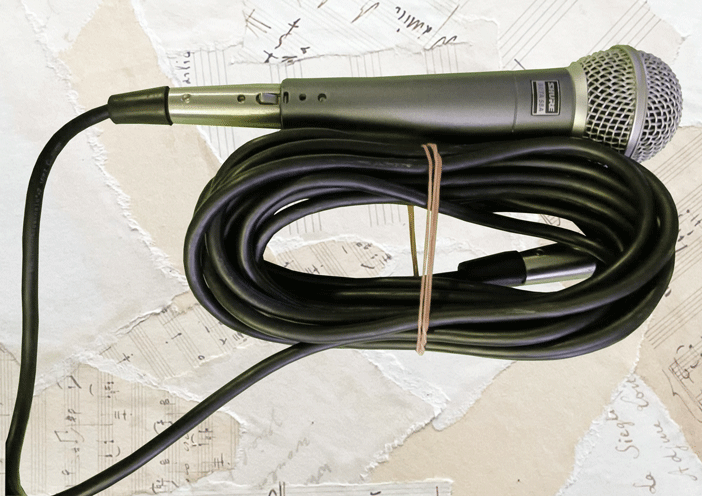
Shure Beta 58A in Performance
The Shure Beta 58A really shines in a live setting – both on stage, or in a studio with a live band. The supercardioid pickup pattern is ideal for rejecting unwanted noise and avoiding feedback. And the pneumatic shock mount is great for minimizing handling noise.
You’ll have to hold the mic quite close to your mouth to convey all of the nuances in your vocals. This is nothing out of the ordinary for vocal mics, and all part of developing good mic technique.
I found the Beta 58A to be quite sensitive to plosives. These are the bassy sounds produced by short bursts of air from words beginning with B, P and T. Plosives won’t be too obvious in a live setting, especially against the sound of a backing band. If it is, it’s worth experimenting with placing the microphone slightly to the side.
In the studio, plosives are easily remedied with an inexpensive pop-shield. And once recorded, they can be eliminated to an extent with EQ or a plugin on your DAW.
A Shure Beta 58A history
The precoursor to the Beta 58A was the legendary Shure SM58 (1966). It was based on Shure’s popular ‘Unidyne III 545’ of 1959. The Unidyne III was a mic developed by Ernie Seeler for PA systems, and it already incorporated a pneumatic shock mount. Reliability and strength were important to Ernie, and it’s reported that he tested the mic by “dropping, cooking, freezing, and submerging it”.
For the SM58, Shure decided to get rid of the on/off switch, and promote it for broadcast use. The SM stands for ‘studio microphone’. The SM58 was a flop to begin with, until Shure began pitching them to live sound engineers. And the rest is history…
An upgraded version of the SM58, the Beta 58 appeared in 1989. And the Shure Beta 58A, reviewed here is a further upgrade, from 1996.
Shure Beta 58A vs Sennheiser E945
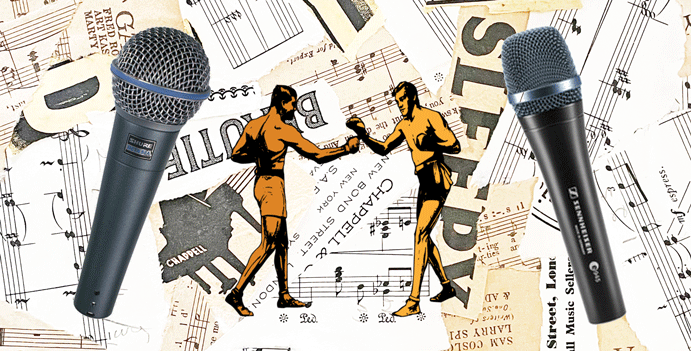
The Shure Beta 58A and Sennheiser E945 are very similar microphones. As well as being dynamic vocal microphones for live performance, they both have:
- supercardioid pick up patterns
- bright clear sound
- strong metal construction
- internal shock mounts
- very effective feedback rejection
Both the Shure Beta 58A and Sennheiser E945 excel at cutting through the mix to bring the vocals to the fore, and they’re sold at similar price points.
So how do you decide between a Beta 58A and an E945?
You could follow the masses and choose Shure, knowing that you’re treading the steps of giants before you. Or you could choose Sennheiser because you’re ready to carve out your own path through the audio jungle. Both strategies lead to the same sound – naturally bright and clear sound for your vocals.
It’s worth considering that Sennheiser offer a generous 10 year guarantee, whereas Shure only offer 2 years. In reality, if something’s going to go wrong with a well built mic, it will most likely happen in the first few weeks, so a 10 year guarantee might not be as valuable as it initially sounds.
Shure Beta 58A vs Shure SM58
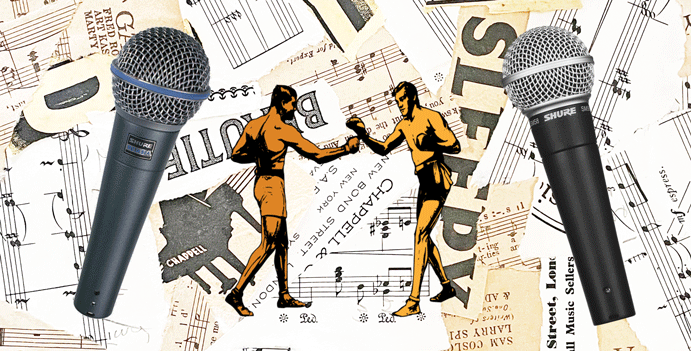
The Beta 58A and the SM58 are both rugged and durable vocal mics designed for live performance. But although they might look very similar, they sound quite different.
The main difference is in the pick up patterns. The SM58 is a standard cardioid mic, while the Beta 58A is a supercardioid.
Supercardioid polar pattern mics are superior at suppressing noise from the sides of the mic. But that’s at the cost of picking up more sound than a cardioid mic from the back. You also have to be right on the mic to get a good sound from a supercardioid, whereas a cardioid allows some freedom to move around.
– More about pick up patterns here –
While the SM58 has become known for its warmth, that warmth sometimes translates into a perceived ‘muddiness’ in the low end. Some people will always prefer the warmer (or muddier) sound of the SM58. But for those who don’t, the Beta 58A is the answer to their prayers, with its much improved clarity and brightness.
The Beta 58A picks up a lot more of the voice’s high-end frequencies. At the same time, it rolls off a lot of low-end rumble. The result is much more detailed and brighter sound than the SM58, but still retaining a natural sound.
But who wants a bright mic? Surely the holy grail in sound recording is a warm sound? It depends on the voice behind the mic.
Ideally the microphone will be chosen to compliment the vocalists unique characteristics. An overly bright or high pitched voice will benefit from a warm mic. And a dark voice might need some of the extra sparkle of a bright mic.
Both the SM58 and Beta 58A are fantastic microphones. There’s a reason Shure dominates the market for live performance microphones. They’re both durable workhorses, and both fantastic for isolation and feedback protection.
However, if I was forced to choose a favourite, mine would be the Beta 58A. Its clearer, cleaner and brighter than the SM58, always pushing vocals to the front of a mix without the need for EQ. Add to this the Beta 58A’s pneumatic shock mount for handling noise and its louder signal, and you’ll see why I like it so much.
It’s largely down to personal taste though, and as they say, one mans meat is another mans poison. Have a listen to both if you get the chance.
Shure Beta 58A vs Beta 57A
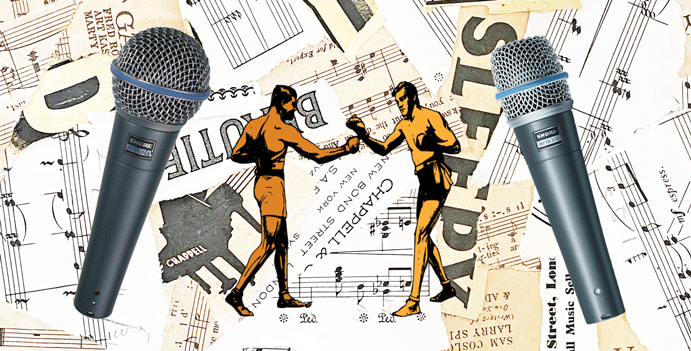
Also in Shure’s Beta range is the Beta 57A dynamic vocal mic. This is the same mic as the Beta 58A in nearly all respects. The only difference, apart from the label, is the shape of the grille.
But why would Shure issue a whole new microphone with such a tiny difference? Because a small change in the shape of the grille can have a large affect on the response. The 57A has a flatter grille, which results in a slightly tighter hypercardioid pattern in the higher frequencies, at around 10kHz.
The smaller grille also enables the Beta 57A to get closer to the sound source, which results in:
- higher output gain
- more gain before feedback
- increased bass response due to the proximity effect
In practice, both microphones have almost identical sound qualities. They’re both brighter than the SM58, with the Beta 57A very slightly brighter than the Beta 58A. Both microphones are great at rejecting feedback and any unwanted noise.
Bear in mind that the grilles are interchangeable on the 57 and the 58, so you could convert one into the other very quickly and cheaply if needed.
Holding the Shure Beta 58A
Where you hold the microphone in relation to your mouth can make a big difference in sound. Professional vocalists are always repositioning their mics to change the tone and add expression to their performance.
Always hold the vocal mic by the main body, and if there’s too much sibilance, try holding it slightly to the side.
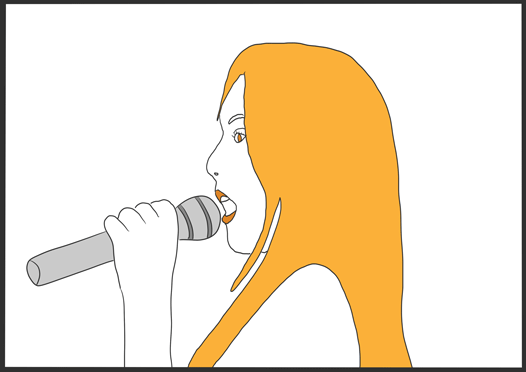
When you have other instruments in close proximity and you just want the sound of the voice, it’s best to sing or speak directly into the mic. This will add more bass to the sound, due to the ‘proximity effect’. It’s an effect used by radio presenters to give them very deep voices.
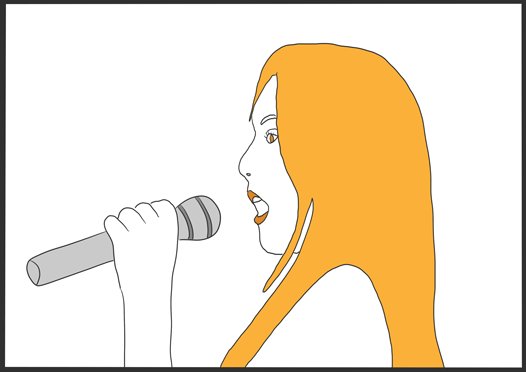
For a more natural, balanced sound, hold the mic between 5 and 10 cm away from your mouth. There’ll be less of the proximity effect, and the mic will pick up more sounds from other instruments, and the acoustics of the room.
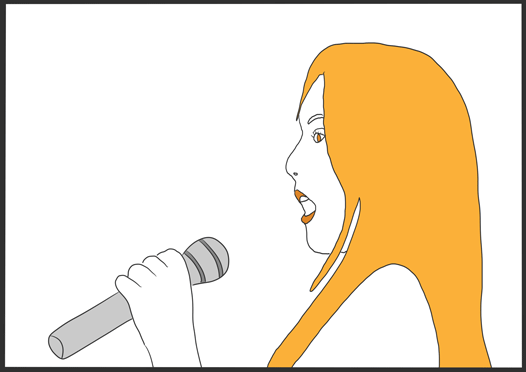
To bring in more of the room sound, and the instruments around you, hold the mic 10 cm or more away from your mouth. This is also a good position for any sudden loud notes, or to shape, and tail off a long note.
What else do you need?
With any vocal microphone, you’ll need:
- Microphone stand
Mic stands reduce any handling noise in the studio. Try a good quality boom stand, with a tripod base like the K&M 210/2
- XLR cable
If you want the best quality XLR cables, try these. Go for the shorter lengths where possible.
- Pop shield
This is to stop little bursts of air causing bassy pops on your studio recordings. You can easily make one of these out of stockings, or buy one here.
The SM58 already has a pop filter built into it, which is great for when you’re on stage. But in the studio it’s worth using a separate pop shield for that added protection.
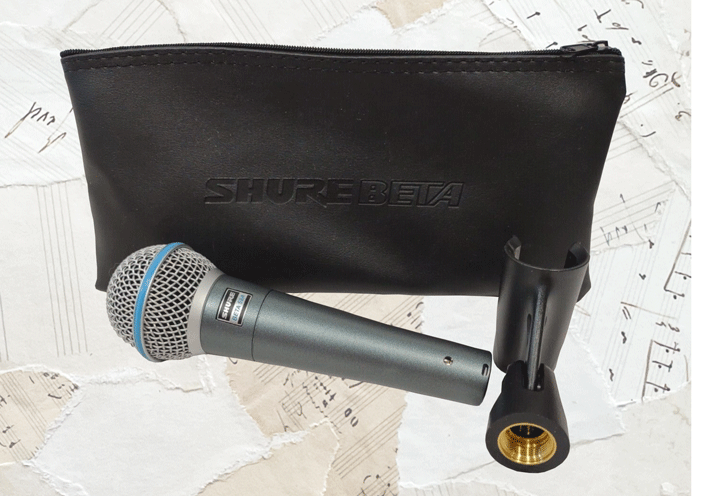
Conclusion
The Shure Beta 58A is a reliable, durable microphone ideally suited for live use. It has a clarity and naturally bright sound which cuts through the busiest mix with ease. Built as the upgrade to the SM58, it has a pneumatic shock mount, rejects feedback, and isolates vocals from other instruments.
It’s also a great mic to have in the studio. With its supercardioid pick up pattern, it minimises the sound of the room, making it particularly suitable for small home studios.
Shure Beta 58A Frequently Asked Questions
How do I know if my Beta 58A is counterfeit?
Unscrew the grille and check that the casing around the diaphragm is free to move up and down. If it doesn’t move, there’s no internal shock mount.
Is the Shure Beta 58A good for recording?
With its enhanced sensitivity and detailed sound, the Beta 58A is a great choice for studio recordings
Is the Beta 58A better than the SM58?
Both of these Shure mics have complimentary characteristics. The SM58 is a warm, smooth mic, suitable for rough and ready stage use, whereas the Beta 58A is more sensitive, with a brighter, more detailed sound
